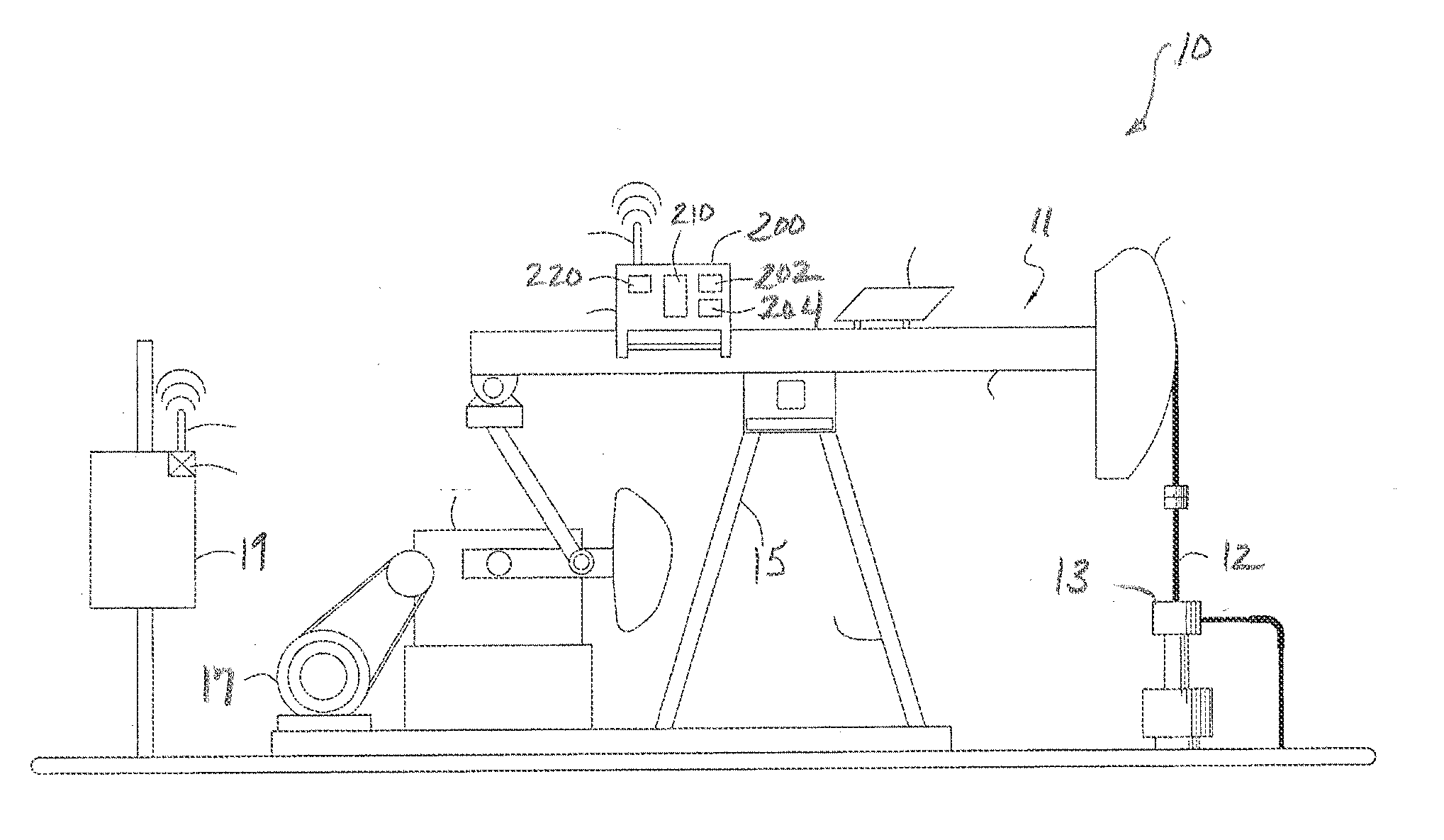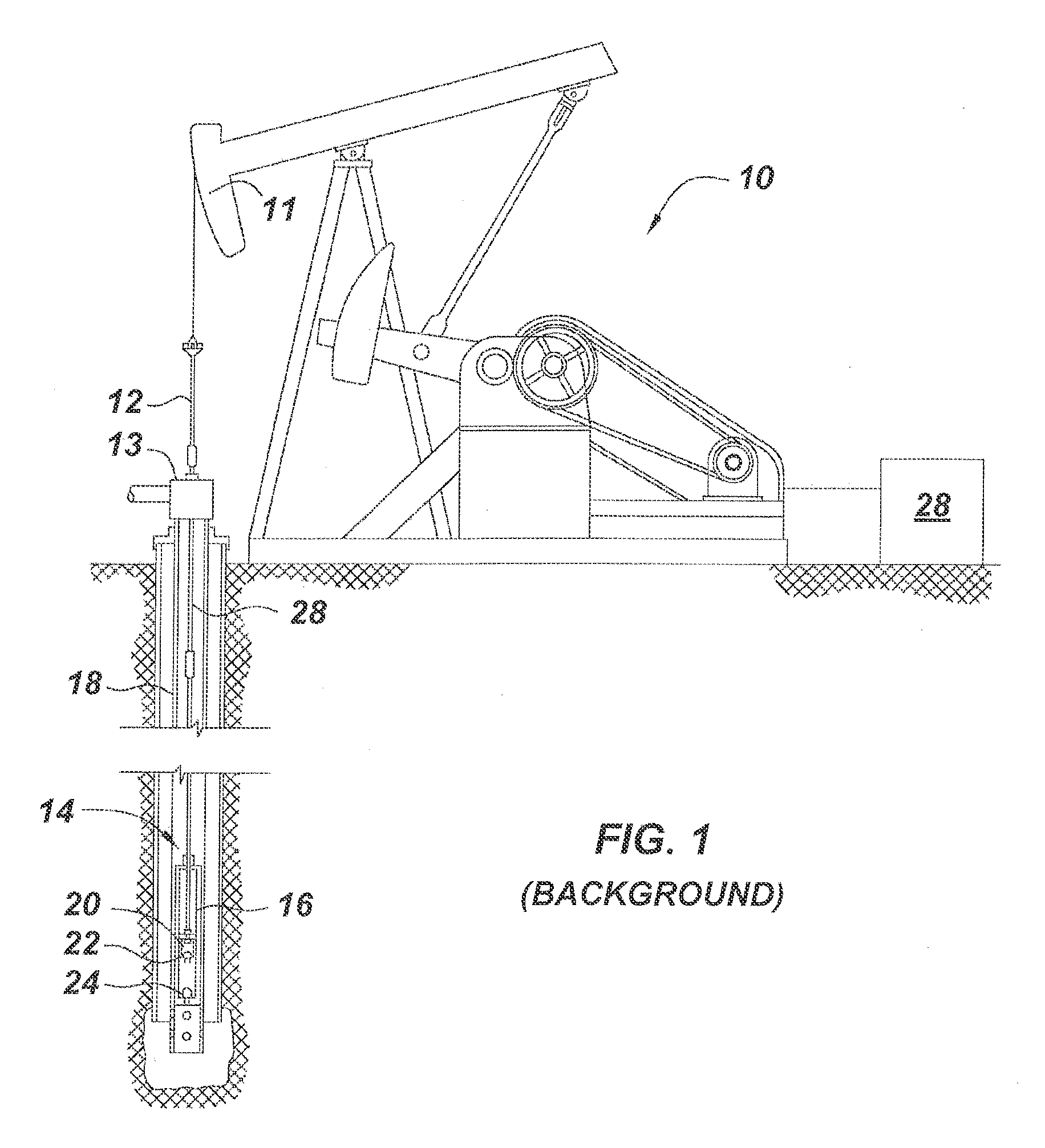Calculating Downhole Cards in Deviated Wells
a well and deviating well technology, applied in the field of calculating downhole cards in deviated wells, can solve the problems of destroying various components of the pump system, inefficient, and inability to accurately represent the properties observed downhole at the pump
- Summary
- Abstract
- Description
- Claims
- Application Information
AI Technical Summary
Benefits of technology
Problems solved by technology
Method used
Image
Examples
Embodiment Construction
[0060]According to the present disclosure, the modified Everitt-Jennings algorithm is used to compute downhole data from surface data by solving the one dimensional damped wave equation with finite differences. The one-dimensional damped wave equation, however, only takes into consideration friction of a viscous nature and ignores any type of mechanical friction. If the well is substantially vertical, mechanical friction is negligible, and the obtained downhole data may be accurate. However, in deviated or horizontal wells, mechanical friction between the rods, couplings, and tubing needs to be considered. According to this disclosure, the modified Everitt-Jennings method is adapted to utilize finite differences to incorporate mechanical friction factors in the calculation of downhole data in deviated or horizontal wells.
[0061]To do this, the teachings of the present disclosure use a finite difference approach to treat a system of two coupled non-linear differential equations, which...
PUM
 Login to View More
Login to View More Abstract
Description
Claims
Application Information
 Login to View More
Login to View More - R&D
- Intellectual Property
- Life Sciences
- Materials
- Tech Scout
- Unparalleled Data Quality
- Higher Quality Content
- 60% Fewer Hallucinations
Browse by: Latest US Patents, China's latest patents, Technical Efficacy Thesaurus, Application Domain, Technology Topic, Popular Technical Reports.
© 2025 PatSnap. All rights reserved.Legal|Privacy policy|Modern Slavery Act Transparency Statement|Sitemap|About US| Contact US: help@patsnap.com



